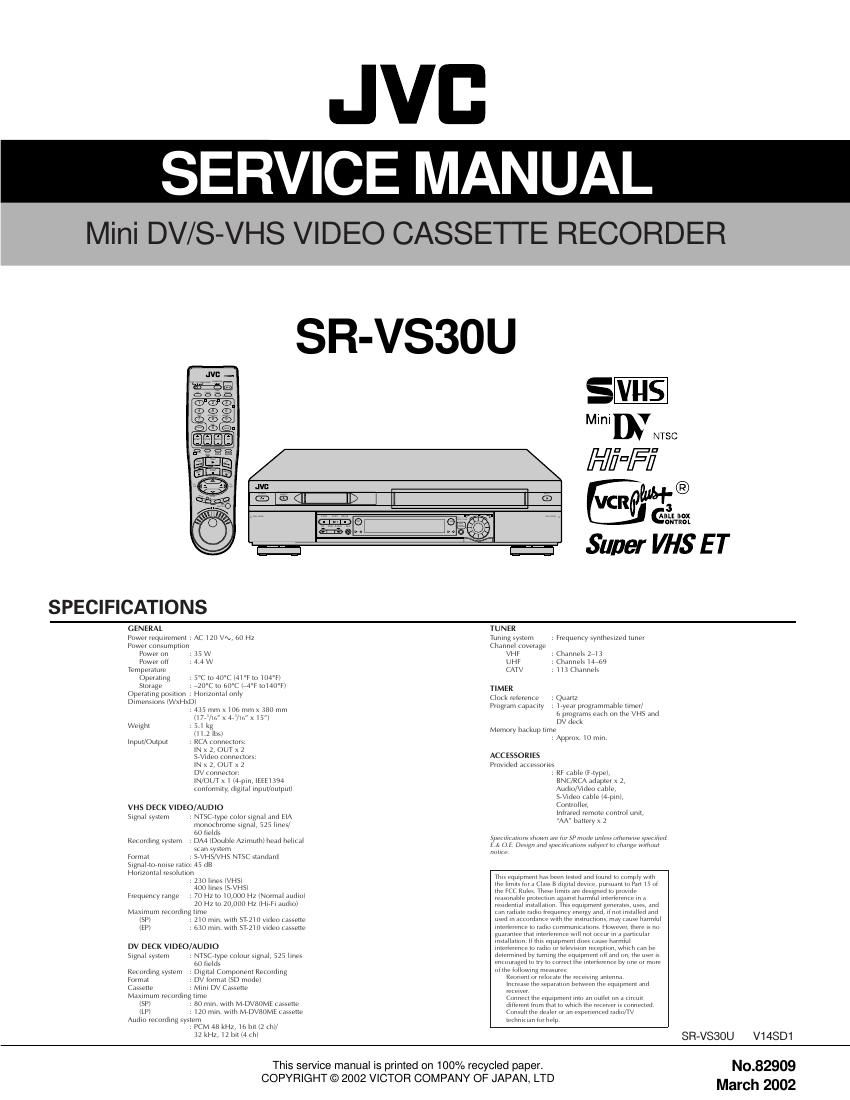Jvc SRVS 30 U Service Manual
This is the 136 pages manual for Jvc SRVS 30 U Service Manual.
Read or download the pdf for free. If you want to contribute, please upload pdfs to audioservicemanuals.wetransfer.com.
Page: 1 / 136
